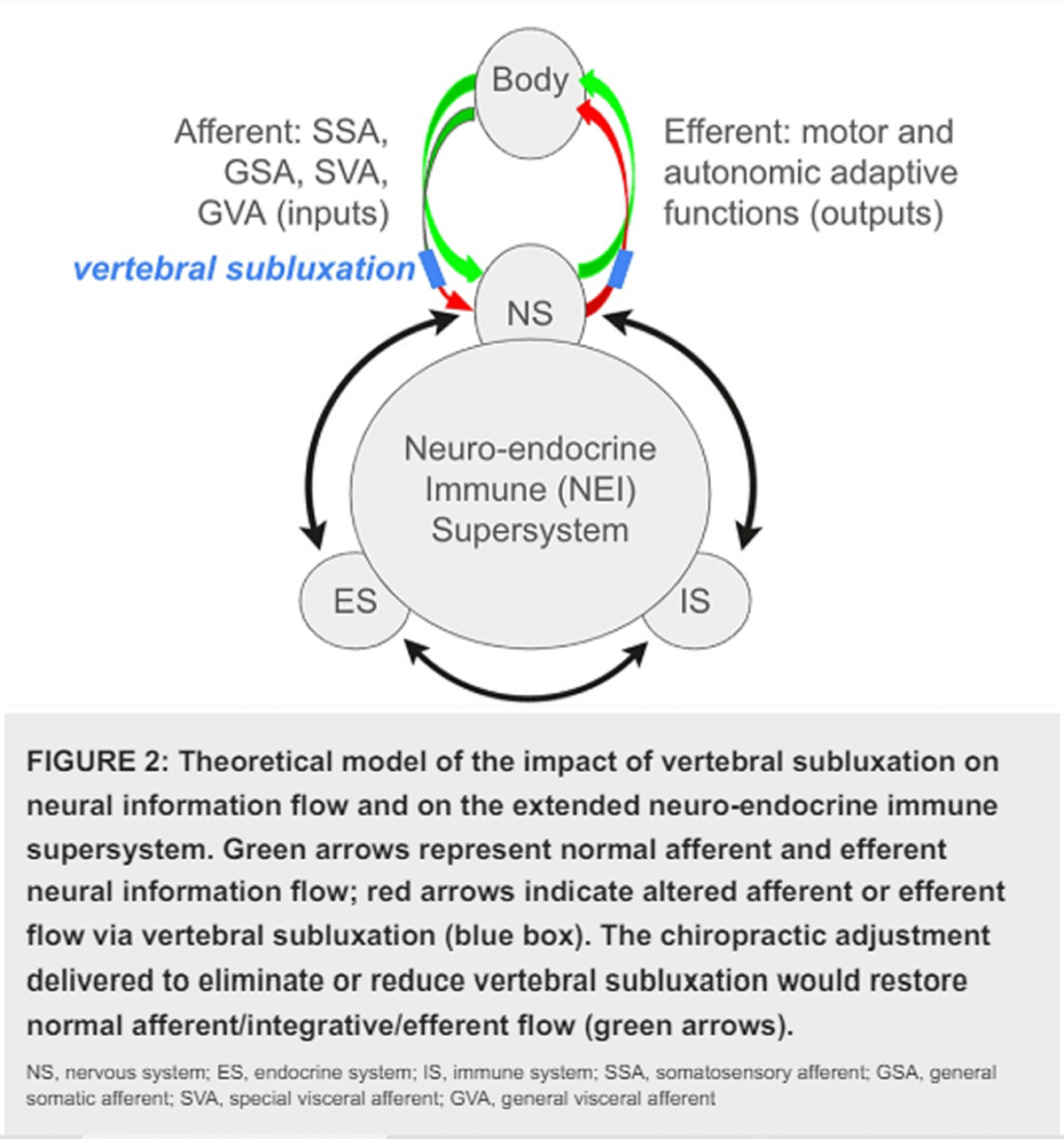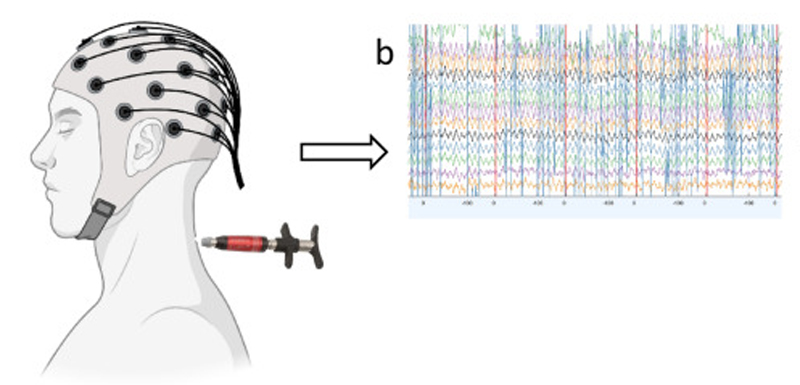What is the Vertebral Subluxation Complex?
SOURCE: ICA International Review of Chiropractic 1992 (Oct): 19-23
Joseph M. Flesia, D.C.
Submitted for your approval is an article written by Joseph M. Flesia, D.C. that is archived on our Chiropractic Subluxation Page. I hope you will find it of interest!
The Vertebral Subluxation Complex Part II:
An Outline
Many correlative and singular studies have been made in the areas of the five components of the Vertebral Subluxation Complex. Some researchers have used the exact titles of the individual components as mentioned in this review. Others report synonymous scientific nomenclature. Ongoing scientific research will and has added more components and subcomponents to the vertebral subluxation complex than presented in this brief outline. However, the following outline will provide the reader an excellent foundation relative to the component basis of the vertebral subluxation complex. This will allow new information to fit into this previously established, scientifically ordered model.
Component #1: Spinal Kinesiopathology (Spinal Pathomechanics, Abnormal Spinal Biomechanics, etc.)
1. Hypomobility, segmental blockade, fixation: Abnormal restriction of joint motion.
2. Hypermobility: Abnormal increase in joint motion.
3. Compensation reaction: Long term hypomobility causes the joint above the hypomobile area and occasionally the joint below to become hypermobile.
4. Loss of joint play: The loss of normal vertical “joint slack/play” so that the joint becomes hypomobile on the vertical plane.
5. Loss of central axis of motion: The loss of normal “Joint Slack/play” so that the joint becomes hypomobile on the rotational joint plane.
6. Positional dyskinesia, dynamic misalignment: Joint misalignment throughout the entire range of motion of the involved joint.
Component #2: Neuropathophysiology, Neuropathology
1. Compressive lesion, the pinched nerve, neurological hypoactivity: The literature indicates that of the neurological damage induced by spinal kinesiopathologic changes, about 10-15% results in a compressive profile.
2. Facilitative lesion, The facilitative segment, neurological irritation, neurological hyperactivity: The literature indicates that, of the neurological damage induced by spinal kinesiopathologic changes, about 85-90% results in a facilitated profile.
3. Articular neuropathy, the hyaline cartilage pads in the diarthrodial spinal joints as well as the local articular ligamentous support tissue are seriously stressed during an acute episode of the vertebral subluxation complex and more so in long term uncorrected vertebral subluxation complex episodes. This causes, in addition to the histopathologically induced pathoanatomical changes due to long term uncorrected vertebral subluxation complex, significant damage to the balance and proprioceptive nerve endings (the Type I Mechano receptors, Type II & III Articular Receptors and Type IV Nociceptive ‘Pain’ Receptors) in the articular surfaces and the capsular ligaments so that “Noxious” nerve impulses are fired off afferently back to the spinal balance center in the cerebellum, the proprioceptor center in the cerebral cortex and in the Limbic ‘joint pain’ regions of the cerebral cortex. Surprisingly, the spinal cord stores facilitated data also, causing reflexogenic activity from the involved joint.
It should be noted that recent studies have shown that discal tissue is supplied by the mechanoreceptor apparatus. A major concern in abnormal mechanoreceptor activity is that it causes abnormal gait, posture and joint kinesthesis resulting in aberrant efferent control to the spine, further debilitating spinal function and health.
Component #3: Myopathology
Read the rest of this Full Text article now!





Great stuff as sometimes it may be good to reflect back to this being a DC. I try to keep it simple when I explain it to patients. I try to use something the patient will understand. In the big picture, subluxation affects your entire body
It’s useful for a clinician to understand all the different factors that go into the subluxation. However for patients, I try to keep it simple.